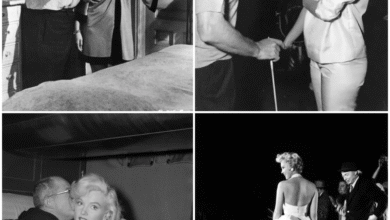Marilyn Monroe’s Strategic Marriage to Joe DiMaggio: A Bold Move to Regain Control and Respect
OPINION: This article may contain commentary which reflects the author's opinion.
In 1954, Marilyn Monroe took a stand that would define her ongoing struggle for autonomy and respect in Hollywood’s golden age. Facing pay disparities and stifling studio contracts, Monroe refused a role she considered beneath her dignity, walked off the set when her demands were ignored, and married baseball legend Joe DiMaggio in a strategic move to reclaim her influence amid mounting negative press.
A Star Frustrated by Contractual Limits
By 1954, Monroe was already a major Hollywood star, celebrated for hits like Gentlemen Prefer Blondes (1953). Yet beneath the glamour, she was shackled by a rigid contract with 20th Century Fox that had remained largely unchanged since 1950. The deal paid her far less than male co-stars and severely restricted her choice of roles, fostering deep frustration.
Her discontent reached a boiling point when she was offered the lead in The Girl in Pink Tights, a musical comedy she famously dismissed as “trash.” Beyond artistic concerns, Monroe was outraged by the glaring pay gap: while Frank Sinatra was set to earn $5,000 per week, Monroe was offered only $1,500—a disparity she refused to accept.
Defiance and Consequences: The Walk-Off and Suspension
Monroe’s refusal to accept the role led to her skipping filming altogether, sparking what was dubbed a “one-woman strike.” On January 4, 1954, 20th Century Fox suspended her and threatened to replace her with Sheree North to keep production on track.
The public showdown drew widespread media attention, casting Monroe in a controversial light and straining her relationship with the studio. Her suspension highlighted the difficult position of female stars caught between fame and studio control.
Marriage to Joe DiMaggio: A Strategic Reclamation of Power
Just ten days after her suspension, Monroe married retired baseball icon Joe DiMaggio in a private ceremony at San Francisco City Hall on January 14, 1954. The timing fueled speculation that the union was more than romance—it was a calculated effort to counteract the negative press and regain leverage.
DiMaggio’s stature brought Monroe renewed public respect and interest, helping reshape her image from rebellious starlet to a woman of stability and stature. This shift put pressure on the studio to reconsider their hardline stance.
Impact on Monroe’s Career
Monroe’s stand against The Girl in Pink Tights and her subsequent suspension marked a pivotal moment in her career, reflecting her growing insistence on fair treatment and creative control. While the immediate dispute ended with her return to work, it paved the way for better roles and pay, reinforcing her legacy not just as a screen icon but as a woman who challenged Hollywood’s rigid power structures.
In 1954, Marilyn Monroe’s refusal to settle for less—and her savvy personal choices—showcased a fierce determination to shape her own destiny in an industry dominated by studio authority.



